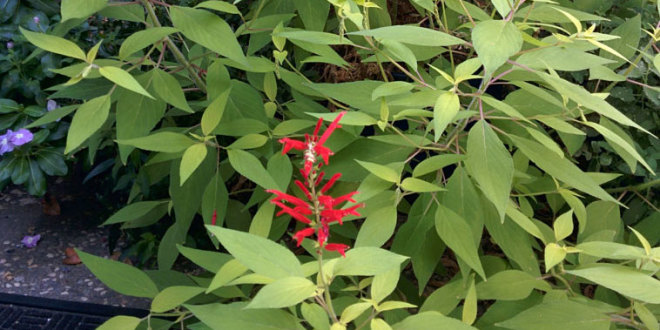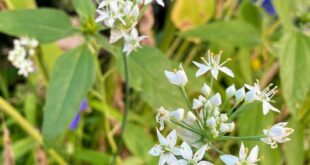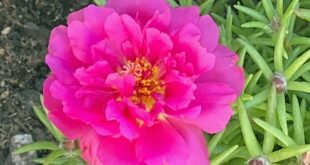Salvia elegans. This plant is attractive to bees, butterflies and/or birds. Tubular red flowers and lime-green leaves are fragrant with a scent similar to pineapple. Can be grown in a 1-foot deep, 1-foot wide pot.
Salvia elegans, commonly called Pineapple sage or Tangerine Sage, is a perennial shrub native to Mexico and Guatemala. It inhabits Madrean and Mesoamerican pine-oak forests between 6,000 and 9,000 ft (1,800 and 2,700 m).
S. elegans produces numerous erect leafy stems and flowers in the late autumn. In a highland temperate forest in central Mexico, pineapple sage was found to be one of the three most-visited species by hummingbirds. It is a short-day plant. The flowering season in Mexico is August onward; further north it may not flower till later autumn, and if there are no frosts, it may flower till spring.
With a hard frost, the plant will die down to the ground and grow back the following spring. Pineapple sage was introduced into horticulture about 1870. The plant is extensively used in Mexican traditional medicine.
Details
Family: Lamiaceae (lay-mee-AY-see-ee) (Info)
Genus: Salvia (SAL-vee-uh) (Info)
Species: elegans (ELL-eh-ganz) (Info)
Synonym:Salvia rutilans
Category: Herbs, Perennials
Height: 36-48 in. (90-120 cm)
Spacing: 24-36 in. (60-90 cm)
Hardiness:
USDA Zone 8a: to -12.2 °C (10 °F)
USDA Zone 8b: to -9.4 °C (15 °F)
USDA Zone 9a: to -6.6 °C (20 °F)
USDA Zone 9b: to -3.8 °C (25 °F)
Sun Exposure: Full Sun
Danger: N/A
Bloom Color: Pink, Red
Bloom Time: Mid Spring, Late Fall/Early Winter
Foliage: Herbaceous, Aromatic
Other details: Average Water Needs; Water regularly; do not overwater
Soil pH requirements: 6.6 to 7.5 (neutral), 7.6 to 7.8 (mildly alkaline), 7.9 to 8.5 (alkaline)
Patent Information: Non-patented
Propagation Methods: From softwood cuttings
Seed Collecting: Bag seedheads to capture ripening seed. Seed does not store well; sow as soon as possible
Read more: http://davesgarden.com/guides/pf/go/1913/#ixzz3HrK3iO9I








